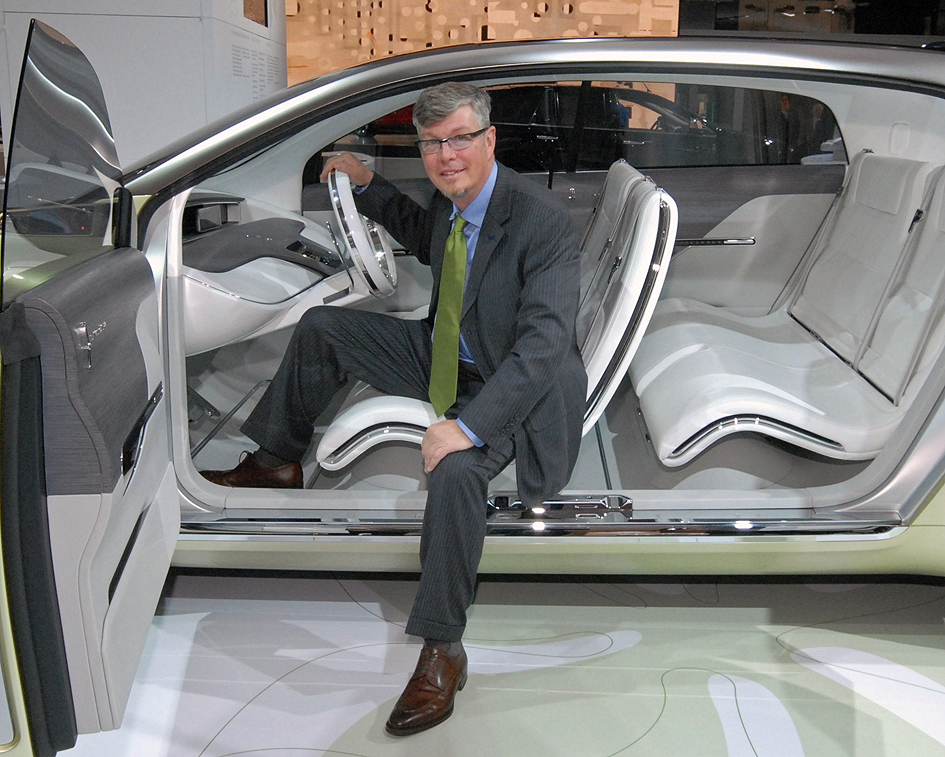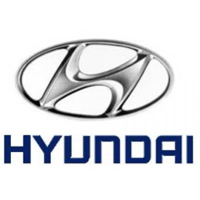interview by John Grafman
Few in the transportation design industry haven’t heard of Freeman Thomas. Without taking too much risk it’s safe to say almost everyone has been influenced by at least a couple of the projects he’s associated with. Simply mention the names VW Concept 1 (the new Beetle), Audi TT concept, or Dodge Tomahawk and the images vividly jump to mind.
As alumni of the illustrious Art Center College of Design in Pasadena, Freeman is one of just a few awarded with an honorary doctorate. Life for Freeman has now come full circle as he was initially provided a full scholarship to Art Center from Ford; he now has the rare opportunity to return the favor as Design Director.
Mr. Thomas has amassed over two decades working with both some of the most renown companies in transportation design, as well as collaborating with a number of the other standouts in their respective fields, from Southern California to Europe.
While a few feel Ford about ready to toss in the cards, there are still a few more cards to be dealt. Fortunately, Freeman is Ford’s ace in the hole. Freeman’s answers our nine questions, and offers his thoughts on everything from the thinning of the herd at the design facilities, to the need for California studios.
____________________________________________________
ADO: How does your time abroad help in creating new designs for Ford?
Freeman Thomas: I think it helps a lot because it makes me think more like what I call a cultural architect – because you have the opportunity to look at different types of lifestyles, cultures, tastes, sensibilities and everything else. And I think, for instance my time growing up in Europe, people are much more efficiency minded especially because that after the war they had to do more with less. That really has made me think more holistically of about a design rather than just the styling aspect of something.
ADO: Do you think America is ready to accept small cars as either luxury or performance vehicles where up till now they have been mostly looked upon as economy cars?
FT: I think small cars have been part of the America’s landscape since the invention of the automobile. I think the model T was a small car and it was hugely popular. And then I think that the original Beetle, if you look at the invasion of foreign cars, and looking at the popularity of the Beetle it shows that what people want are cars that are more compact and efficient, but are also very high in quality.
ADO: Ford has an incredible history with an extensive body of work from which to draw inspiration from. As a result do you feel compelled to look back and draw from this heritage, or do you want to focus on looking forward and creating cars that are not as readily linked to the past?
FT: I think it’s all of that. Because it all depends on the product you are doing, and the product is like a hit movie. In some cases let’s say we are designing a new product we are doing globally. And this product is kind of like the Verve concept, it really has no history as far as history of a car exactly like that, but at the same time it builds on the equity of the engineering and size and packaging and vehicle segment and things like that. So for that type of vehicle it’s perfect – you create something absolutely new.
On the other side of it, equity is one of a company’s biggest assets to be able to create something that already has a built in market. You always have to think about how much do you want to reinvent it and how much of it do you want to keep. And then in some cases it can be design language is a very powerful tool, and you can draw upon a few different inspirations from the past.
ADO: How will Ford be able to create a new product lines while also paring down it’s staff?
FT: Its just becoming more efficient. Great things are done with small teams, a skunkworks. I’ve always worked in a small team from my times working at Porsche and then Volkswagen / Audi – always small teams. So, what I think it does is it pares down all the fat. Everybody becomes accountable. I think that you also have to look at the tools that you use, and you also want to be really fluent in analog, digital, and also how much do you actually fabricate, and how much do you look in the tube, and how much you debate, and how you come to a solution with all the key stakeholders. So, that it means that the key stakeholders and your team become much closer linked. The bigger the team you just have way too many sub-organizations and processes. It doesn’t many people to create a great car.
ADO: From your experiences what separates the men from the boys when it comes to being a true design professional in a studio environment?
FT: I think that the difference is maturity. Obviously, individuals that don’t have maturity will run away from difficult challenges. The ones that are very mature and professional will look at the challenge straight ahead and straight in the eyes. It’s amazing that even with proportions that an immature designer might say there is no way I can do anything out of that, but a well-seasoned, professional, mature designer can take something that looks seemingly ordinary and make magic out of it.

Detroit, January 13, 2009 – Freeman Thomas, Design Director, North America Strategic Design, Ford Motor Company, in the Lincoln C concept at the North American International Auto Show. Powered by a sophisticated human machine interface (HMI) and forward-thinking in-car connectivity technologies, the Lincoln C concept reinvents the automobile as a customer’s companion in life on and off the road.
ADO: What case can be made to keep design studios here in California, rather than utilizing some of the other studios scattered about the world?
FT: Well, what we found is, we sort of settled on this is that California is one of the most important places to take the temperature of. In other words, it’s a county in itself. It produces trends and buying desires and habits that really predict what goes on at least in the rest of America. And, if you were to look at key places in the world to take the temperature of, California is one of the key places to have yourself set up at.
ADO: Do you think it’s about time our country takes a harder look at not just our sources of transportation, but how we structure our cities and communities, as well as our lives so that ultimately we won’t have to rely on the same types of vehicles that we use today?
FT: I think ultimately government, industry, entrepreneurs, individuals need to somehow have a forum to be able to create some of these broader, bigger ideas. Because driving an automobile or driving a car the way we do in southern California is in some case its something you do with pleasure is but in some case you rather take a mass transit. You rather be able to take an alternative form of transportation. In some cases we don’t have other choices that are realistic to us, its not that we don’t have other choices, but most of us don’t want to take four hours to get up to L.A. We want to drive up there, we want to be able to park, we want to leave when we want to leave, and come home. We are individual. So, I think that is something that is going to take the collaboration between government, and industry, and individuals and entrepreneurs together to create the right balance.
ADO: If there were one thing you could change in this business (aside from time consuming interviews) what would it be?
FT: I’d like to make everyone more accountable. Because I think we rely too much on research and data, and rely less on the talents, visions, and skills of the people we hire. If we could edit out some of the research that’s redundant and go more out of what our experiences, talents, and intuitions tell us to do, the quicker we will get to the right answers.
ADO: Briefly, who are some of the people (alive or deceased) that inspire you, and why?
FT: For me some of the greatest inspirations have been individuals that transcended being a designer, an engineer, or architects, people like Frank Lloyd Wright. Because I think Frank Lloyd Wright was more than an architect, more than someone who drew pretty buildings and houses. He created the lifestyle, he had a philosophy, and his clients lived the lifestyle he created for them. People like Erwin Komenda from Porsche transcended being an engineer and created vehicles with mythical emotions, and also created a lifestyle that I’m sure that even he even didn’t predict like the beetle, or the Porsche 550 Spyder, or the Audi Unions. People like or Malcolm Sayer (Jaguar) created some of the most gorgeous, most beautiful cars in the world. For me the greatest inspirations are artist, and designer, and creators that basically contribute back to society a sense of art, a sense of being, a sense of not being pragmatic, so some of those people I just named are some of my greatest inspirations.































